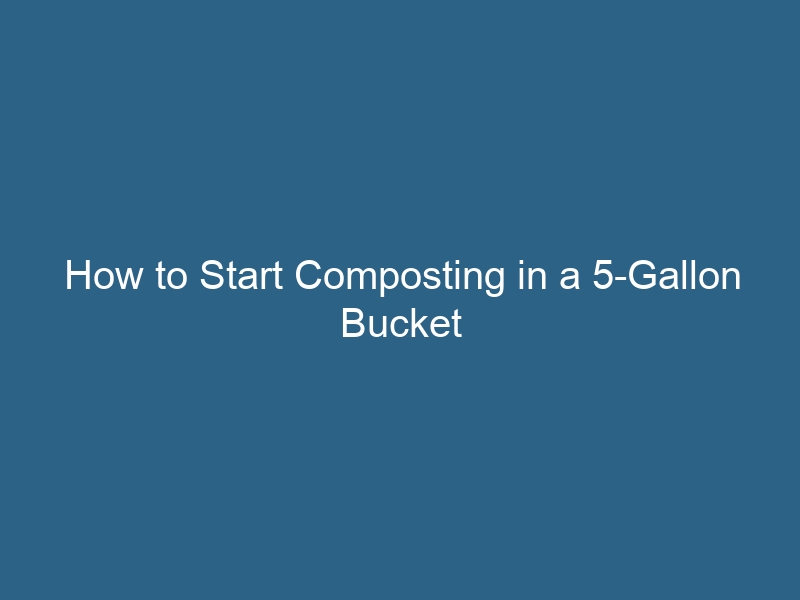Quck answer
Composting in a 5-gallon bucket is a simple and effective way to recycle organic waste. Start by drilling holes in the bottom and sides of the bucket for aeration. Layer brown and green materials, such as leaves and food scraps, in the bucket. Moisten the materials and mix them occasionally to promote decomposition. Keep the bucket in a warm and sunny spot. Within a few months, the organic waste will break down into nutrient-rich compost that can be used in your garden. Remember to avoid adding meat, dairy, and oily items to the compost, as they can attract pests.
You don’t need a large compost bin or an expensive store-bought system to try composting. A 5-gallon bucket is a perfect container for starting a simple composting setup. Once you understand how it works, you can upgrade to a larger composting container like a trash can or make multiple bucket composters to handle more materials at once. The bucket method is best for regular layered composting rather than worm composting, as a full 5-gallon bucket is too deep for worms.
Creating the Compost Bucket
Find a clean 5-gallon bucket with a tightly-fitting lid, as the lid helps keep animals away from the composting materials. A locking lid also makes it easier to mix the compost by rolling the bucket a few times. Drill 1/2-inch holes every few inches around the bottom perimeter of the bucket. Move up a few inches and repeat with another ring of holes, and then do the same near the top. Around 15 to 20 holes are sufficient.
Repeat the process with holes every few inches around the bucket lid and the bottom of the bucket, making about 15 to 20 holes for each. These holes allow for proper airflow, as oxygen is essential for breaking down organic matter into compost. The holes near the bottom of the bucket prevent water from collecting in the DIY compost bin. Remove and discard any bits of plastic stuck to the drilled holes to prevent plastic from ending up in your compost.
Composting Greens and Browns
Organic matter used for compost naturally breaks down over time. Layering a mixture of compostable green and brown matter helps it decompose more efficiently. Green matter is rich in nitrogen and includes fresh, organic materials like grass clippings, wilted lettuce, and kitchen or garden produce scraps. Coffee grounds and used tea bags are also considered green materials for composting due to their nitrogen content.
Brown matter is high in carbon and generally drier than green matter. Dried leaves, dead branches, plain cardboard, and paper grocery bags are all examples of brown matter. Straw, sawdust, and wood chips are also brown matter. Scrap paper without any coatings can also be used as a brown element in the compost bucket.
Using Your Homemade Compost Bucket
Choose an outdoor location for your compost bucket that is shaded from direct sunlight. Place a handful of twigs at the bottom of the bucket to prevent the compost material from clogging the holes. If desired, elevate the bucket on bricks or stones to allow airflow through the bottom. Leaving it on the ground is also acceptable as long as excess moisture can drain out.
Layer the brown and green compost materials, using approximately three times more browns than greens. For example, add 3 inches of brown matter, followed by 1 inch of green matter, and repeat. The top layer should be brown, or you can add a thin layer of potting soil or topsoil to help prevent odors. Pour water over the layers to ensure they are moist, and then place the lid on the bucket. Roll the bucket to mix the green and brown materials together.
After letting the bucket sit for a duration of two days, take off the lid and add additional green and brown matter if the bucket is not adequately filled. If the mixture appears completely dry, add water and then put the lid back on and roll or shake it once again. Wait for an additional two days and repeat the process, but refrain from adding more material once the bucket is three-quarters full. Instead, stir or roll the bucket every alternate day. After approximately six weeks, the material should have a dark and fertile appearance, resembling soil. When it reaches this stage, it can be incorporated into your garden soil.


